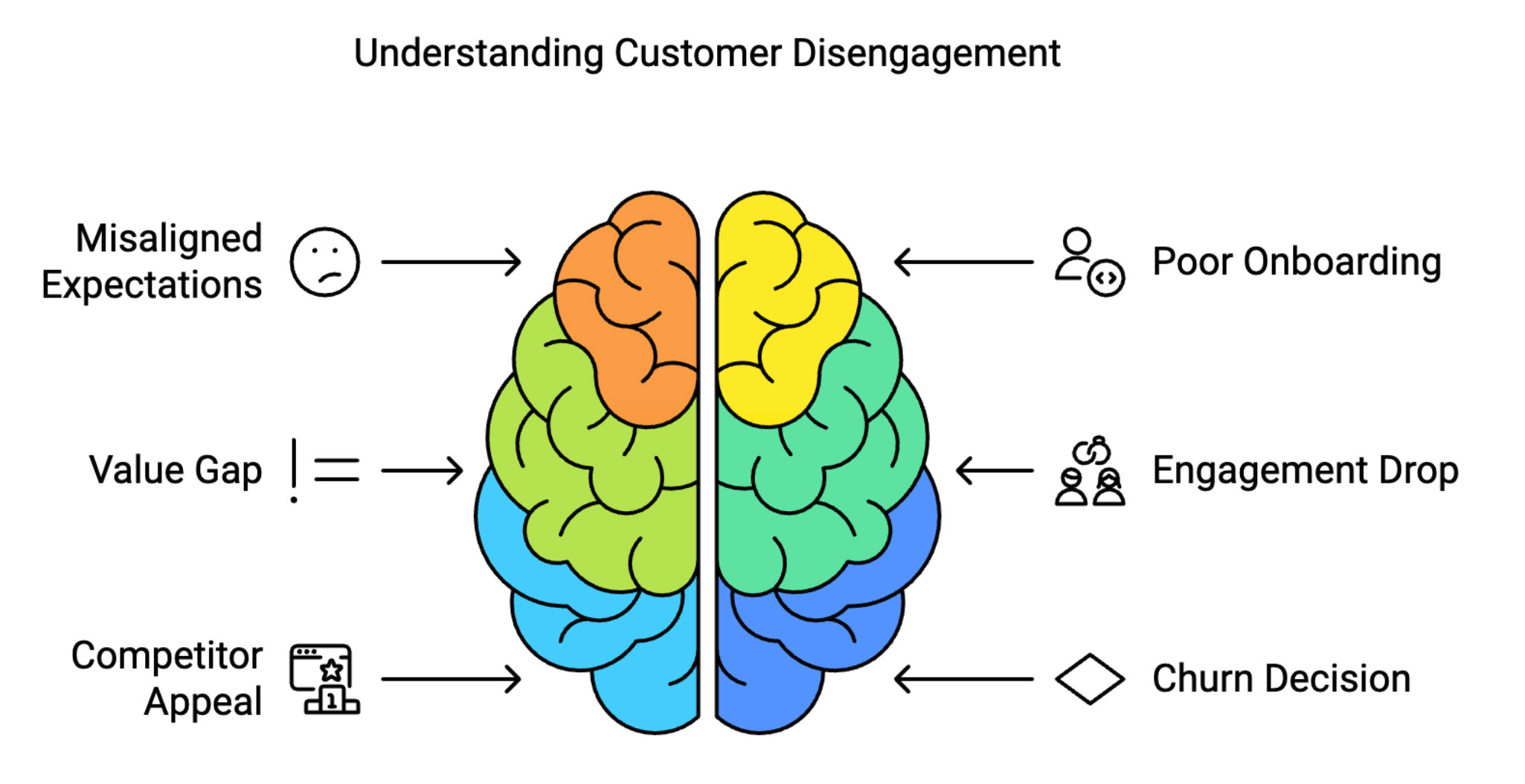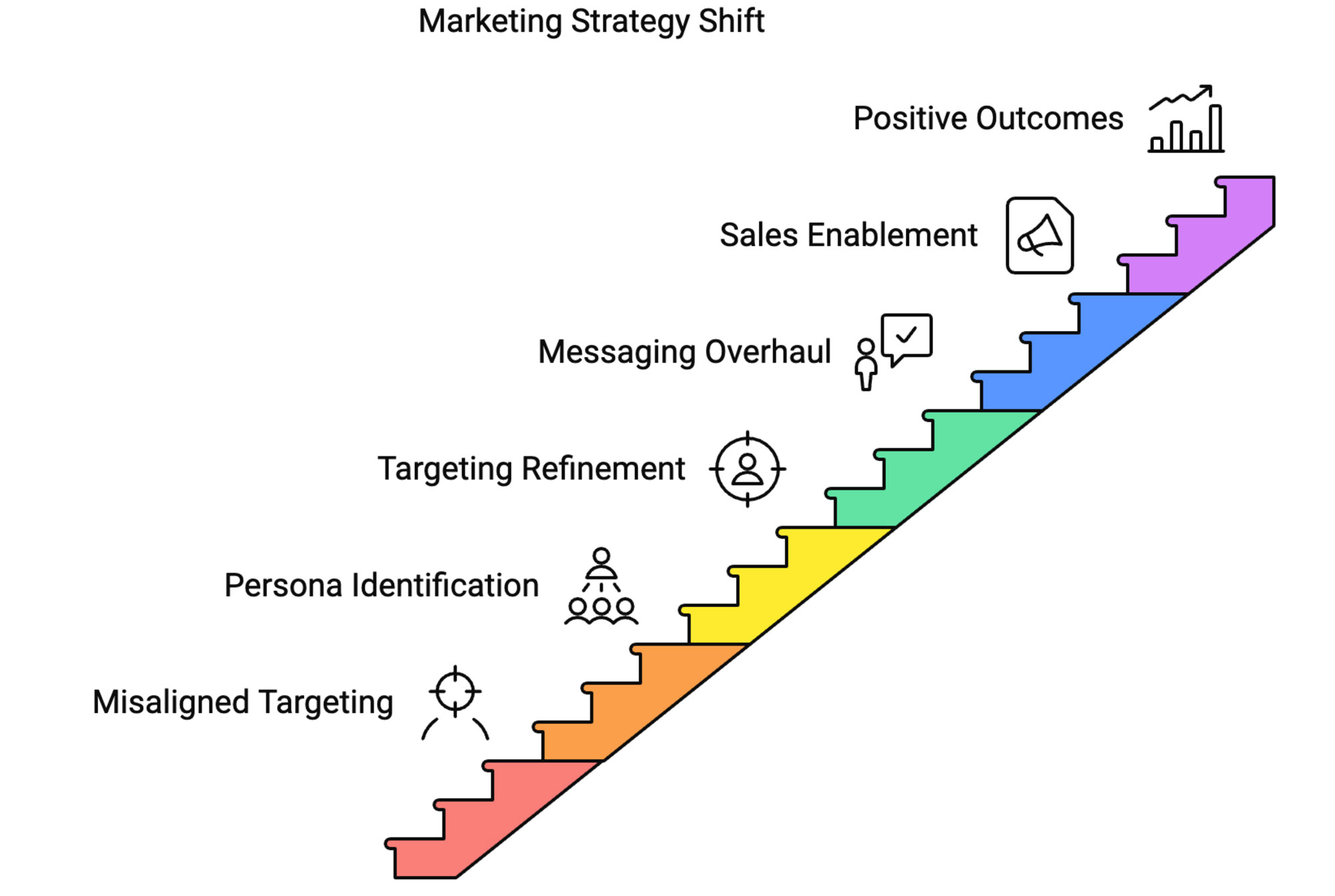Churn: The Silent Saboteur of SaaS Growth
A Marketing Perspective
Introduction: The Hidden Threat to Your SaaS Success
In the fast-paced world of SaaS, growth is the name of the game. But lurking in the shadows is a silent saboteur that can derail even the most promising businesses: churn. For marketing professionals in the SaaS industry, it is important to understand and reduce churn. This is key for long-term success and keeping a stable customer base.
Why? Because in the recurring revenue business models that define SaaS, customer retention is king. Even a small uptick in churn can send shockwaves through your revenue projections and growth plans.
A one percent increase in churn can lead to a 12% decrease in valuation over five years (source). It’s time for marketing teams to step up and take ownership of this crucial metric.

In the recurring revenue business models that define SaaS, customer retention is king. Even a small uptick in churn can send shockwaves through your revenue projections and growth plans.
The Financial Impact: Why Churn Should Keep You Up at Night
Let’s talk numbers. The cost of acquiring a new customer (CAC) in SaaS can be astronomical—often five to twenty-five times more expensive than retaining an existing one, according to Harvard Business Review (source). Now, consider your Customer Lifetime Value (CLTV). Every customer that churns is a hit to your CLTV, and by extension, your bottom line.
But it gets worse. Churn doesn’t just affect your current revenue; it’s a drag on your growth potential. Here’s a sobering thought: a SaaS company with a 5% monthly churn rate will lose about 46% of its customer base within a year. That’s nearly half your customers—gone.
The impact on monthly recurring revenue (MRR) can be severe. But here’s the silver lining: the same Harvard Business Review study found that a 5% increase in customer retention rates can boost profits by 25% to 95%. The message is clear: if you’re not actively working to reduce churn, you’re swimming against the tide of sustainable growth.
Churn: The Silent Profit Killer

Why Marketing Must Own the Churn Metric
Traditionally, churn has been seen as a customer success problem. But here’s the truth: marketing plays a crucial role in retention, right from the first touch point. Here’s why marketing professionals need to step up:
- Setting the Right Expectations: Your messaging shapes customer expectations. Misaligned expectations lead to disappointment, and disappointment leads to churn.
- Ongoing Education and Engagement: Marketing doesn’t stop at acquisition. Continuous education about product value and features keeps customers engaged and reduces churn risk.
- Early Warning System: Marketing teams often have the best tools to monitor customer sentiment and engagement, allowing for early intervention with at-risk accounts.
- Value Reinforcement: Regular communication of product value and customer success stories helps reinforce the decision to stay.
Research indicates that resolving the issue in the first interaction could prevent 67% of customer churn (source). This underscores the importance of marketing’s role in setting the right tone from the start and throughout the customer journey.
The Churn Journey: A Marketing Perspective
Understanding the churn journey is crucial for developing effective retention strategies. Here’s what it often looks like:

Each stage of this journey presents an opportunity for marketing intervention to improve retention rates and retain customers.
Proactive Strategies to Reduce Churn Rate in Marketing
So, how can marketing teams take the lead in reducing churn? Here are some strategies:
- Customer Feedback Loop: Implement regular surveys, interviews, and feedback mechanisms. Tools like Net Promoter Score (NPS) and Customer Satisfaction (CSAT) surveys can provide valuable insights. Companies that use customer feedback effectively have 55% higher retention rates (source).
- Personalized Onboarding: Create tailored onboarding experiences that address specific customer needs and use cases.
- Value-Driven Content Strategy: Develop content that educates customers on product value and best practices.
- Engagement Monitoring: Use marketing automation tools to track customer engagement and trigger interventions for at-risk accounts.
- Win-Back Campaigns: Design targeted campaigns to re-engage churned customers or those at risk of churning.
Case Study:
A Marketing Revelation in Data Analytics
To illustrate the power of marketing in combating churn, let’s look at how Thirdside helped a leading data analytics platform provider, which we’ll call DataViz, dramatically improve their customer retention and market position.
The Challenge
DataViz was facing a puzzling challenge. Despite having a powerful product, they were experiencing higher than expected churn rates and struggling to gain traction in certain market segments. They turned to Thirdside to uncover the root causes.
Through our in-depth win-loss analysis and customer interviews, we uncovered a critical blindspot in DataViz’s marketing strategy:
- Misaligned Persona Targeting: DataViz’s marketing efforts were primarily focused on data analysts and business users – the people who would be visualizing and interacting with data daily. However, this wasn’t always the key decision-making group for enterprise analytics solutions.
- Value Proposition Mismatch: The messaging focused on data visualization and ease of use. This appealed to end-users but did not meet the underlying dependency of for standardized data.
- Sales Process Disconnect: The sales team, following the marketing lead, was engaging with the wrong stakeholders in many potential client organizations.
The Revelation
Our research revealed a crucial insight: In the world of big data, there are two distinct personas with different needs:
- Data Users: Analysts and business users who focus on visualizing and interacting with data.
- Data Stewards: IT professionals and data engineers responsible for data accuracy, governance, and infrastructure.
DataViz’s core value proposition of normalizing data and ensuring a single version of truth across the enterprise was far more aligned with the needs of data stewards. However, their marketing and sales efforts were primarily targeting data users.
The Solution
Armed with these insights, DataViz’s marketing team took action:
- Refined Persona Targeting: They developed new buyer personas focused on data stewards and IT decision-makers.
- Messaging Overhaul: The team revamped their messaging to emphasize data governance, scalability, and enterprise-wide data consistency – topics that resonated with data stewards.
- Sales Enablement: They created new materials to help the sales team identify and engage with the right stakeholders in target accounts.
- Content Strategy Pivot: The content marketing strategy shifted to include more technical white papers, case studies on data governance, and thought leadership pieces on enterprise data strategy.
The Results
The impact of this strategy shift was significant:
- Reduced Churn: By aligning their product with the right decision-makers, DataViz saw a notable decrease in customer churn.
- Improved Sales Efficiency: Sales cycles shortened as teams engaged with the right stakeholders from the start.
- Market Positioning: DataViz strengthened its position as an enterprise-grade solution, differentiating itself from competitors focused solely on data visualization.
- Customer Satisfaction: Engaging with the right personas led to better product-organization fit, increasing overall customer satisfaction and advocacy.
This case study demonstrates the critical role marketing plays in reducing churn. By understanding the true decision-makers and their needs, DataViz was able to not only reduce churn but also improve their market position and customer satisfaction.

The Thirdside Advantage: Unveiling Hidden Churn Factors
While the strategies we’ve discussed are powerful, they’re most effective when based on deep, accurate customer insights. That’s where Thirdside comes in.
At Thirdside, we specialize in uncovering the real reasons behind customer churn—reasons that often remain hidden in surveys, CSAT, NPS or other feedback mechanisms. Our unique “Just Ask” philosophy involves in-depth conversations with current, former, and potential customers to reveal the true drivers of churn.
Why Choose Thirdside?
- Comprehensive Approach: We go way beyond your churned customers. We also interview current customers, those at risk of churning, and even those who’ve renewed. This 360-degree view provides a complete picture of your customer experience.
- Unbiased Insights: As a neutral third party, we can elicit honest, unfiltered feedback that customers might not share directly with you.
- Actionable Recommendations: We don’t just deliver data. We provide concrete, prioritized actions to reduce churn and improve customer satisfaction.
- Marketing-Focused: Our insights are tailored to help marketing teams refine messaging, improve onboarding, and create more effective retention campaigns.
Remember, in the world of SaaS, keeping your existing customers is just as crucial as acquiring new ones. Don’t let churn be the bottleneck in your growth story. Take action today to improve your retention rates and build a stronger, more resilient customer base.